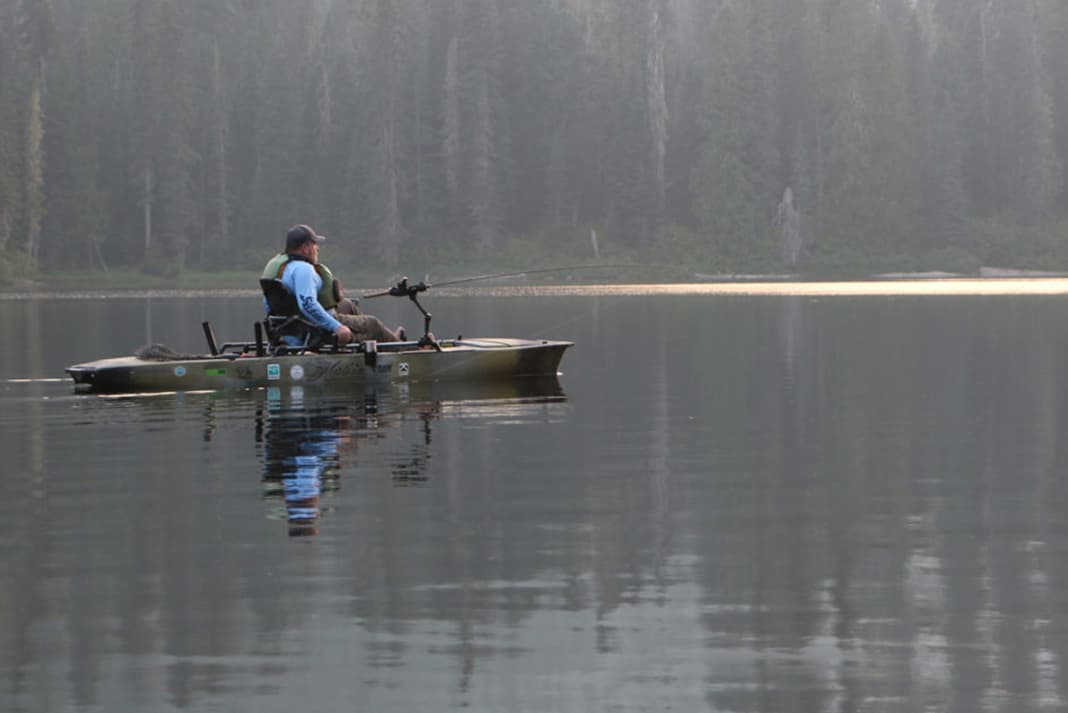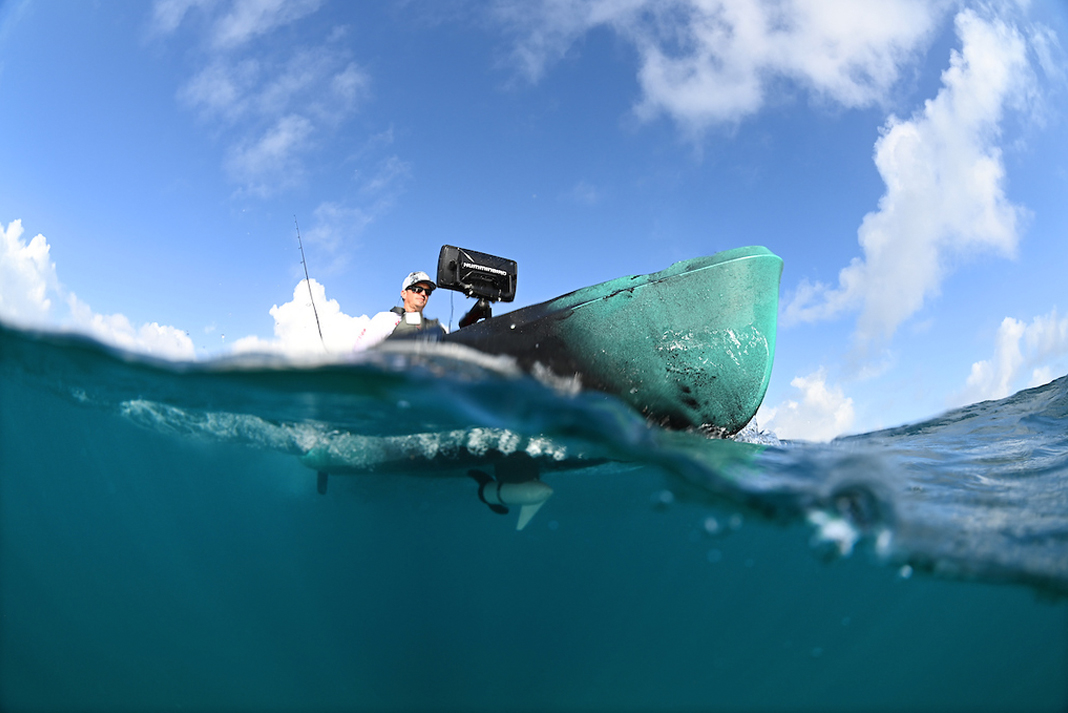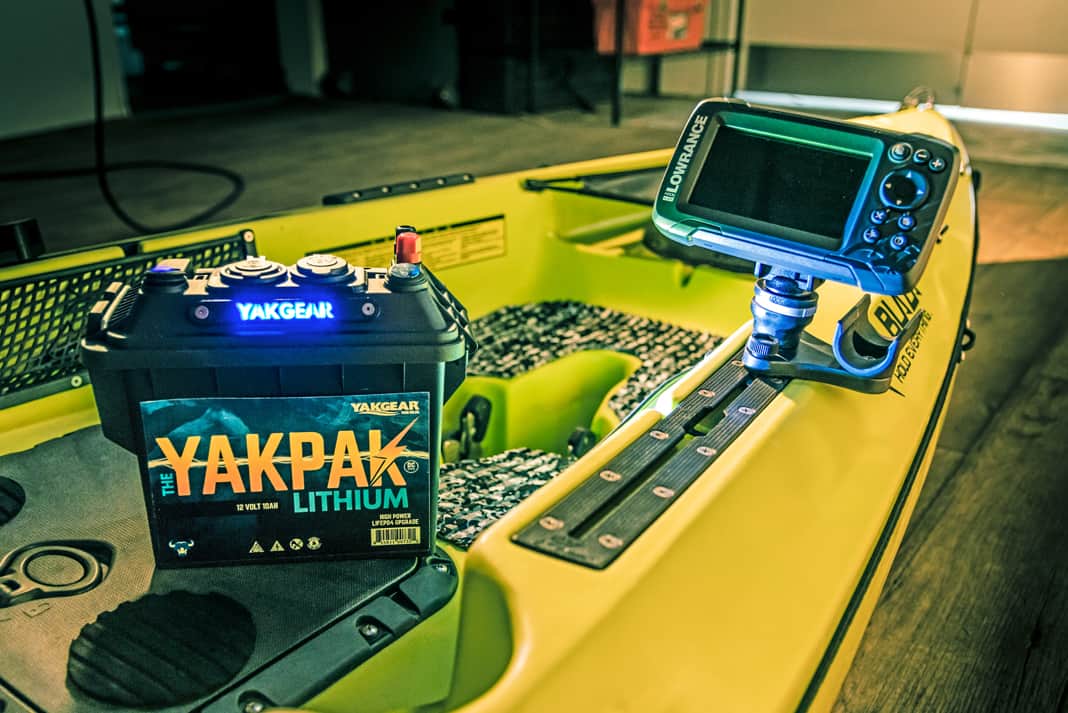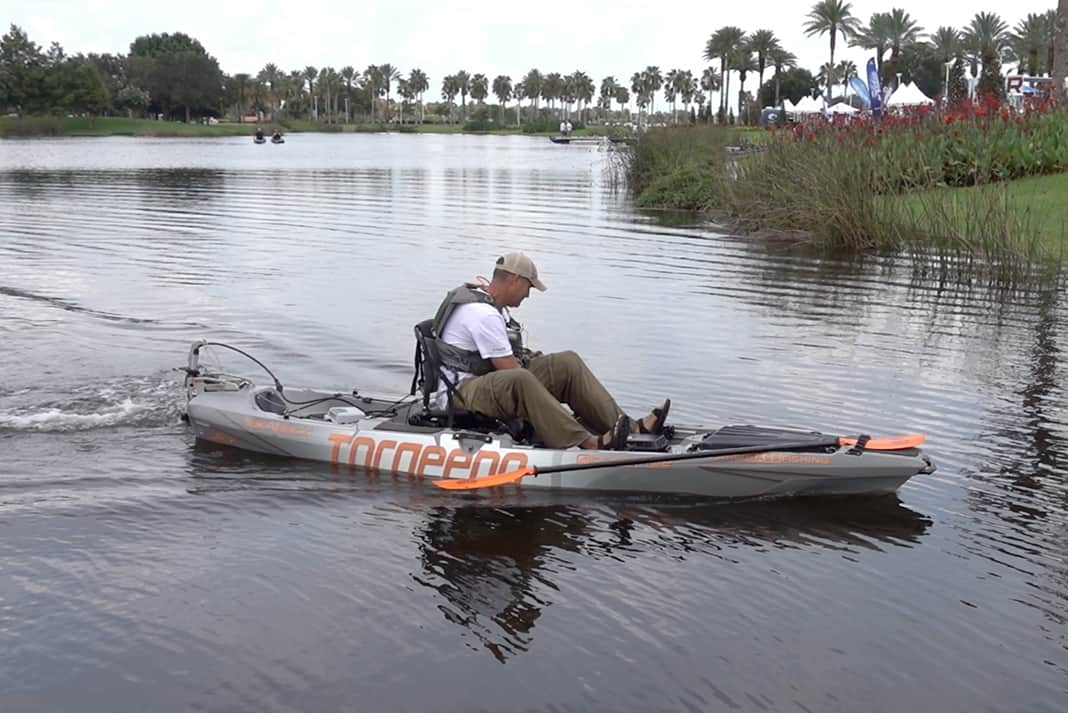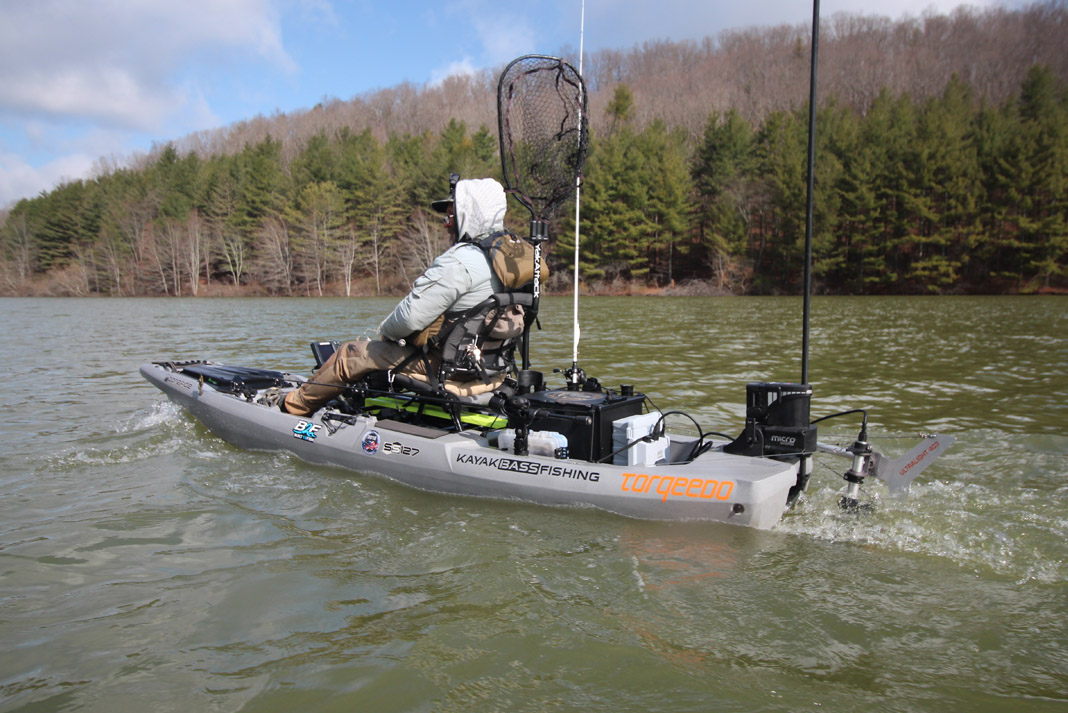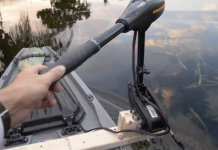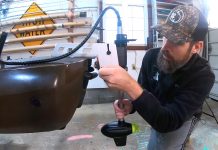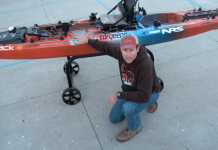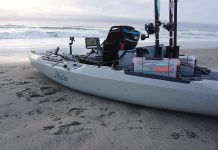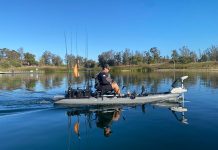At the dawn of modern kayak fishing, shade-tree engineers figured out how to attach an electric trolling motor to a fishing kayak. After a decade of trial and error, manufacturers have developed motorized kayaks and electric motors for fishing kayaks that work seamlessly.
But why use a trolling motor? Many kayak anglers are in the sport more for angling than kayaking. These enthusiasts are looking for a quick, quiet and effortless ride to the fish. Recently, more kayak fishing tournaments are allowing electric trolling motors for a competitive advantage. Also, kayak fishing appeals to many people with disabilities who enjoy the freedom of fishing in a motorized kayak.
Despite the freedom they offer, trolling motors aren’t for everyone. The key is knowing when to use one. Installing a motor and battery adds significant weight to your kayak. And, it takes a big, heavy kayak to support a trolling motor. You’ll likely need a trailer and heavy-duty cart to transport the boat. On the water, the motor’s shaft and propeller will increase the draft, making it more difficult to fish in shallow locations.
The best applications for trolling motors are serious anglers who are interested in fishing and not concerned with transporting, storing and operating a motorized kayak. Many anglers will use the motor to reach a fishing hole, then switch to paddle or pole to fish the area. While a motor gives a kayak more speed and range, you have to constantly monitor battery power. If you are interested in fishing more than paddling or pedaling, then a motorized kayak may be perfect for you.
VIEW ALL KAYAK MOTORS
SHOP KAYAK MOTORS ON AMAZON
The Basics of Trolling Motors
Is it Legal to Put a Trolling Motor on a Kayak?
In most areas, motorized kayaks have to follow the same rules as powerboats. A kayak with an electric or gas motor will need to be titled and registered. Some water bodies restrict motorized watercraft, including electric kayaks. Also adding a trolling motor may change the mandatory safety equipment you need. You’ll have to check your local department of natural resources or motor vehicles for rules and regulations.
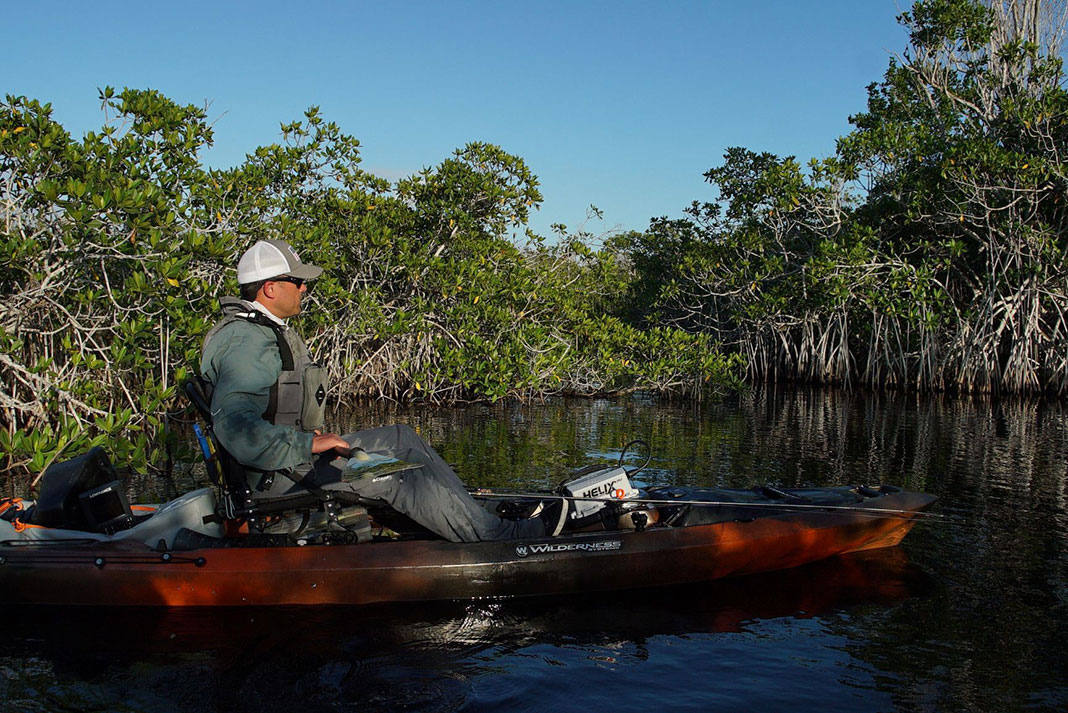
How Fast Will a Kayak Go with a Trolling Motor?
The average speed for a paddle kayak is three miles per hour. Most pedal kayaks can go steady at four or five miles per hour. Without any effort, a trolling motor will push a kayak at six to 10 miles per hour into a headwind and opposing current. But speed comes at a cost. Running the motor at top speed will quickly deplete the battery. The best strategy is to throttle the motor at 80 percent or less of max-speed. You’ll go a little slower, but save a lot of battery power.
Types of Motors
There are many options for adding a motor to a kayak. Traditional trolling motors, electric outboards and small turbines each have their place. Or, check out one of the many motorized kayaks available from major manufactures. Each choice has pros and cons, check out our suggestions below for getting the best motorized kayak for you.
Trolling Motors
The first efforts to motorize a kayak relied on existing electric trolling motors. These light and nimble powerplants are designed to allow a gas boater to switch to electric power to maneuver the boat while he’s fishing. Trolling motors feature a large propeller, skinny shaft and small head unit.
The best models for kayak fishing are remote controlled. Advanced motors with GPS and Bluetooth connection can be programmed to follow a course or hold the kayak in place. Using a handheld controller, the angler can turn, power, and reverse the motor. They are connected to a 12-volt battery with a heavy cable.
Trolling motors are relatively inexpensive with a wide range of power and size choices. The motor can be placed on the bow or the stern, depending on where space is available on the kayak. You can install a trolling motor using a store-bought mount or use hardware store supplies to do it yourself.
Electric Motors
While trolling motors can be modified to fit a kayak, there is a class of electric motors designed with kayaks in mind. Small, electric motors have become more reliable and accessible making them a perfect choice for a fishing kayak. These motors are usually mounted on the stern of the kayak with rigging to control power and direction.
Electric motors for kayaks are more compact and lighter for better balance. These motors are best paired with a matching high-power, lightweight lithium-ion battery. Electric motors may be the best choice for powering a kayak, but the convenience and power come at a price. These power systems can cost ten times as much as a bargain trolling motor.
Electric Turbines
Most recently, small electric turbines have been developed to power kayaks and standup paddleboards. These motors resemble a tiny jet engine and produce impressive power in a small package. Turbines require less battery power, too. The football-sized power plants take up less space and weigh a fraction of the weight of an electric motor. You can attach the motor to the stern of the kayak or install a special rudder and motor combination. With a smaller propeller and lower profile, these motors don’t produce as much power a trolling motor, but they work great to power you to the fishing hole and back.
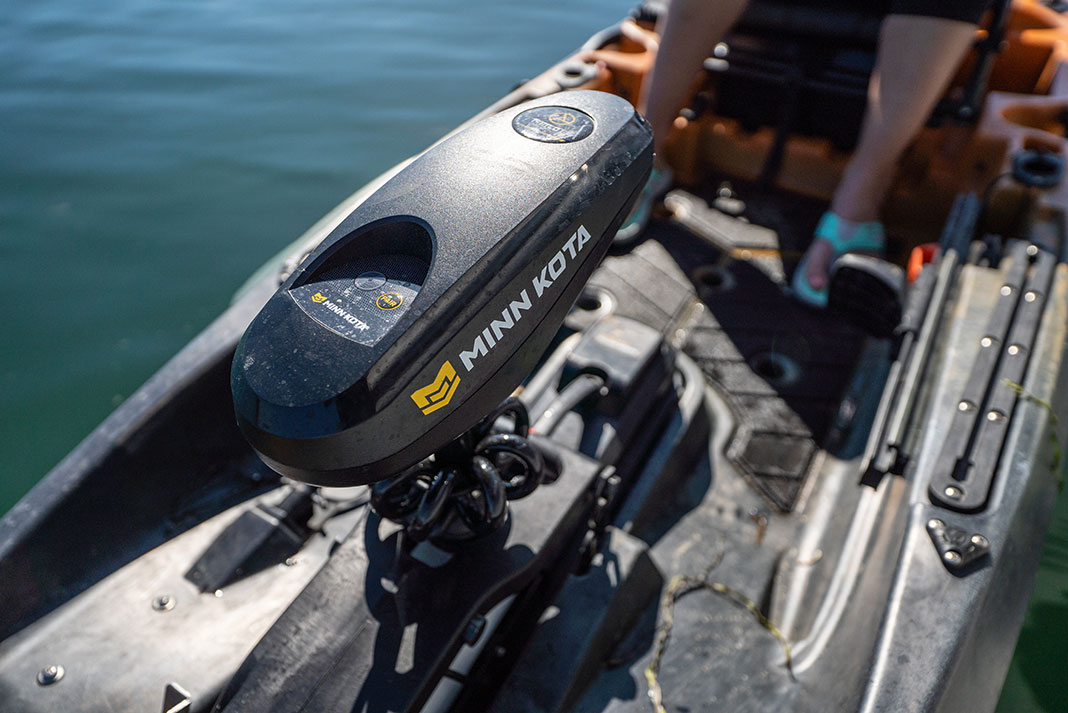
Motorized Kayaks
Kayak manufacturers have jumped onboard the motor trend producing kayaks with integrated electric power. These boats are designed to accommodate a purpose-built electric motor with factory-installed rigging and controls. If you are committed to electric power, and don’t plan to use the boat with a paddle, then you can’t beat a factory motorized kayak. They are perfectly balanced, cables and rigging run below deck and the systems have been tested and approved by professional anglers. While factory-built motorized kayaks are the perfect power package, the price tag can be two or three times higher than a bargain boat.
Buying a Trolling Motor
What Size Trolling Motor Do I Need for My Kayak?
On an electric trolling motor, power is measured in pounds of thrust. You will see motors labeled with 35, 40, 50 and up to 70 pounds of thrust. The higher the number, the more power the motor produces. However, as the number goes up, so does the battery draw. When choosing the best trolling motor for a kayak, you have to balance the amount of thrust with the size of your battery.
For a kayak, which is considerably lighter than a powerboat, a 30- to 40-pound thrust motor has enough power to go all day at a manageable speed. When you rig a trolling motor on a kayak, another consideration is shaft length. You want to choose the motor with the short shaft, between 24 and 30 inches, that will still reach the water without increasing draft or weight.
How to Test a Used Trolling Motor
Buying a used trolling motor is a gamble. Many things can go wrong when combining electricity and water and even the best models have a limited lifespan. First, visually inspect the motor for corrosion and damage. Many parts are plastic, which can fade or crack. Of course, connect the power cable to the battery and test the motor and controls.
The battery also has a limited lifespan, so you may want to consider supplying a new battery when you buy the motor. The good news is most electric motors can be repaired. And there are local service centers and repair shops for expert attention. Even if you buy a lemon, you can most likely get it up and running.
Batteries for Trolling Motors
What Kind of Battery to Use for a Trolling Motor
Trolling motor batteries fall into two categories: lead-acid and lithium-ion. Lead acid batteries are larger, heavier and less expensive. Lithium-ion power plants have lower weight, smaller size and a higher price tag. Lead-acid batteries are very common, often they are available at your local auto parts store.
A regular car battery will not power a trolling motor for long. Instead, use a deep-cycle, lead-acid, marine battery designed to hold a charge longer and produce a more consistent current to power an electric motor all day. These batteries can also be depleted and charged multiple times.
Lithium-ion batteries are lighter and smaller. Some models are specifically designed to power a motorized kayak with shorter cables and waterproof connections. The best lithium-ion batteries are connected to a throttle control that can display power, speed, range and even location and other information. You can find a 12-volt, deep-cycle marine battery for a couple hundred bucks. A high-end lithium-ion battery will cost just under a thousand dollars.
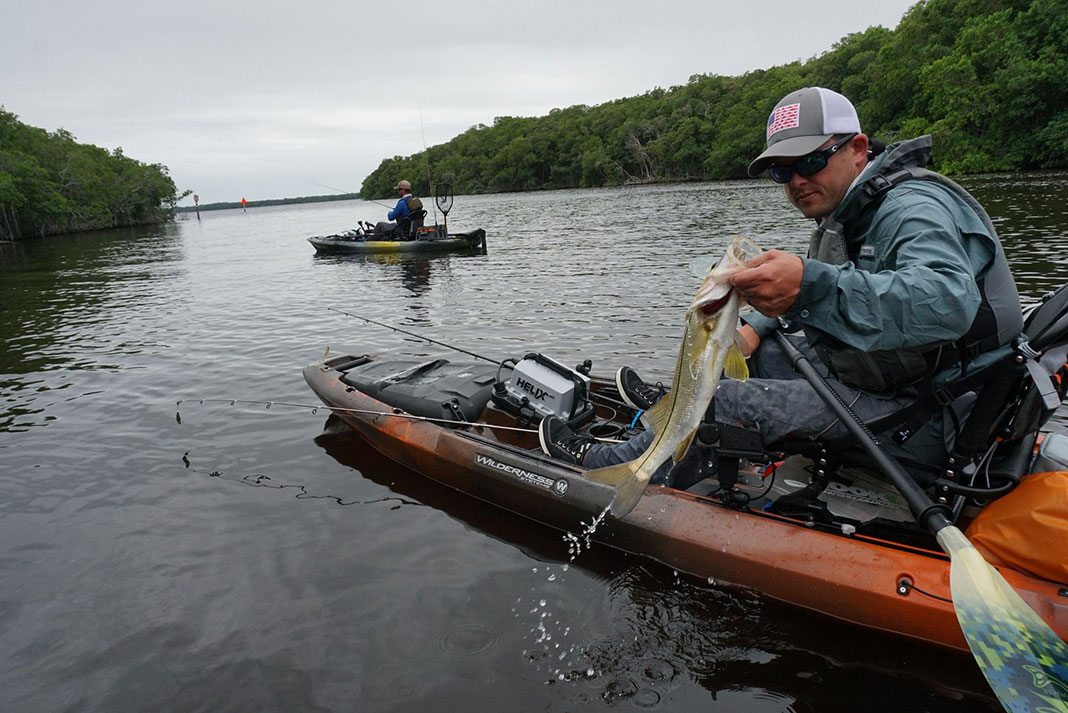
When to Charge a Trolling Motor Battery
Using an electric trolling motor requires a bit of maintenance and care. The motor should be rinsed and dried after each use. Connections must be cleaned and lightly coated with electrical grease. Batteries should be charged after each trip. While a battery may last a couple days, it’s best to recharge at the end of each trip. Monitor the charge and run time to detect any problems with the battery. If the battery seems to be drawing more power or taking longer to charge, it may be time to replace it. Ideally, you want to balance battery and motor size so you have enough power to fish all day.
How to Mount a Trolling Motor on a Kayak
Where to Mount a Trolling Motor
Mounting an aftermarket trolling motor setup on a kayak requires careful consideration. First, test the placement of the motor and battery before drilling any holes. Take the kayak into shallow water and add weight equal to the weight of the motor to the bow and then stern to see how it will affect the boat’s balance.
If you are primarily using the motor for propulsion to the fishing spot, it may be best to place it in the stern of the kayak. If you are going to use the motor to maneuver while fishing, you can put the head unit in the bow.
Many kayaks have flat areas and mounting points to accept an electric motor. If your boat isn’t pre-rigged for an electric motor, look for a flat area with plenty of support to hold the motor mount. Place the battery as close to the seat as possible to keep the weight centered.
How to Mount a Trolling Motor
The first question anglers ask is how to put a trolling motor on a kayak. The good news is, many companies and custom designers are offering purpose-built mounting brackets for kayak trolling motors.
Most anglers choose a trolling motor with a transom clamp and tiller control. Many aftermarket mounts use a bar that attaches to the gunnels and holds the motor to the side of the kayak. This system places the mount where you can still reach the motor to control speed and direction. While this is easy and effective, the motor hanging off the side of the boat is off balance and a little awkward.
Other mounts place the motor directly behind the stern of the kayak. But these outfits require extra rigging to control speed and direction. Small electric motors come with rigging and battery for a complete package that can be installed on almost any boat.
How to Use a Trolling Motor
How to Use a Trolling Motor for Fishing
Some anglers use an electric motor to reach the fishing hole, then switch to paddle or pole to fish shallow water. Other anglers use the trolling motor to maneuver the kayak while fishing. A bow-mounted trolling motor can spin 360 degrees to keep the kayak pointed towards the fish. The most advanced motors are connected to Bluetooth and GPS allowing you to control the boat with your smartphone and program the motor’s performance. If you’re more interested in using the motor to reach a distant fishing spot, it may be better to mount the motor in the stern where it will be more efficient and easier to control.
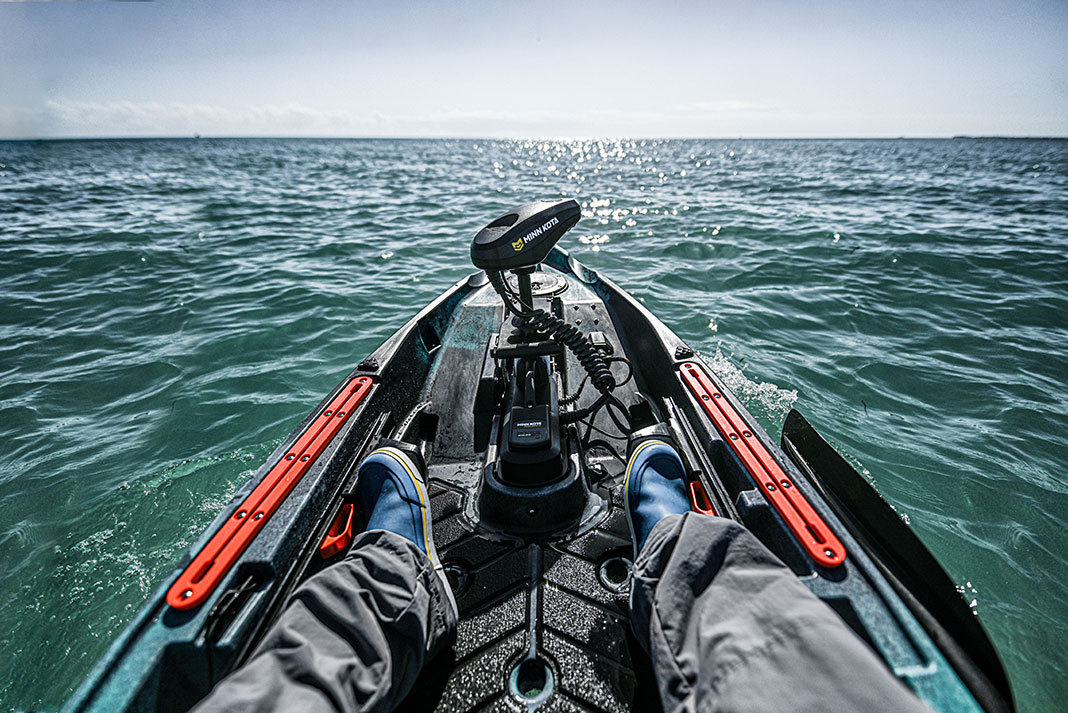
How to Use a Foot Pedal Trolling Motor
Standard trolling motors for motor boats are controlled by a foot pedal. The angler stands in the bow of the boat powering and turning the motor with a foot control while casting and working his lure. Since a kayak angler spends most of the time sitting, it is more difficult to control the boat with a foot pedal. However, foot-pedal controls are less expensive and easy to install on the stern or bow of the kayak. On the way to the fishing grounds, you can easily control the pedal with your hands, then switch to foot control while you stand and fish.
DIY Kayak Trolling Motor System
If you’re a shade-tree mechanic, you may be inspired to create your own kayak trolling motor system. DIY kayak trolling motor systems will save money at the expense of weight and control. There are dozens of videos on the web with plans involving lumber, hardware and PVC tubing.
While these systems are creative and ambitious, they may not be safe or very smart. Be sure the mount is sturdy and the rigging reliable. Even if a DIY kayak trolling motor system is thrifty, it may cost you time and effort on the water.
After a decade of trial and error, manufacturers have developed motorized kayaks and electric motors for fishing kayaks that work seamlessly. | Feature photo: Courtesy of Old Town Canoes & Kayaks

